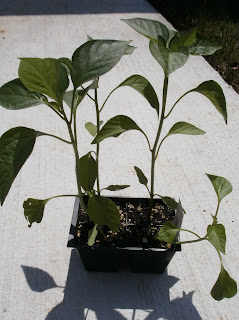Before you begin, you will need to have an idea about what types of vegetables you will be wanting to plant. We recommend only growing vegetables that you and your family thoroughly enjoy, especially for your first few years gardening. As you gain more experience you might want to try new vegetables, there are some that you might like when they are fresh that you never enjoyed the grocery store canned versions of. Once you know which plants you want, you will need to find out what they need for the best growth conditions, this step will help you to plan how you are going to plant your garden, once you have chosen your garden's location you will want to use your research and draw out a map of where you want to plant each vegetable allowing room for plants to grow, also while you are doing this, you might want to write out a planting schedule if you are using a big variety of plants that need to be planted at different times of the year. If you are ordering seeds, you will want to go ahead and place your order. And this brings us to the next step:
Where should your garden be located? If you have a small yard you may not have much choice on where to locate your garden, however, if you have a large area that you can choose from there are some things that you will want to keep in mind when deciding which spot to place your garden in. You will want to choose a spot on your land that receives at least 6 hours of sunlight a day. Sunlight is the best light for plants and most vegetable plants need a lot of it. The soil type is also a good thing to keep in mind when choosing your garden's location. Many people are surprised at how much the pH of their soil can vary from one spot of their yard to the next. Now, even if your soil is not perfect you can take measures to balance the soil. You will need to do a soil test in order to determine what the pH level of your soil is. We have written a blog about soil testing on Red Hill General Store's blog.
You will also want to be sure that your garden is either located near a source of water, or that you have the means to transport water to it. Water is vital to a garden's survival. Also, your garden will need to be located in a place that is convenient for you to tend to it frequently. Gardens do have a bit of upkeep, and you are more likely to achieve this upkeep if your garden is located where you can easily have access to it.
When deciding how big your garden needs to be, you will need to factor in how many people you intend to feed with your garden, and also how much work you want to do in your garden. We feel that it is okay to have a smaller garden, especially if this is your first one and you are learning the ropes. You do not want to overwhelm yourself in the process.
Now, you will want to take your information from your soil test and determine if you need to add nutrients to your soil in order to balance the pH of it for the next step. for this step you will want to break up the soil in the area that you have determined to have your garden in and you will want to add some compost and whatever your pH test determined that you need. After adding this to the top of your soil you will want to till everything so that it mixes well with the topsoil in your garden. Tilling can be done with one of our Earthway Cultivators.
One thing that can make planting a bit easier, is to take the plan that you drew out earlier, and use a hoe or shovel, to transpose that plan from your paper to the soil. This will help you to determine if the plan you drew will genuinely work in your garden location. This is best to do before planting anything so that you can easily redraw your plan up if you find that something needs to be changed. Now if your plan is good to go, you will want to apply fertilizer and use a rake to blend it in with the soil so that the fertilizer does not burn your seeds.
Going by your schedule that you wrote out for your plantings, you can start planting your garden. You may want to do a little further research on your seeds to find out what types of rows they work best in, and the best way to sow a certain type of seed.
Follow our Blog for further postings on how to maintain your garden, container gardening, and more!
Ready to start gardening? Read more at Seeding a Garden.


No comments:
Post a Comment